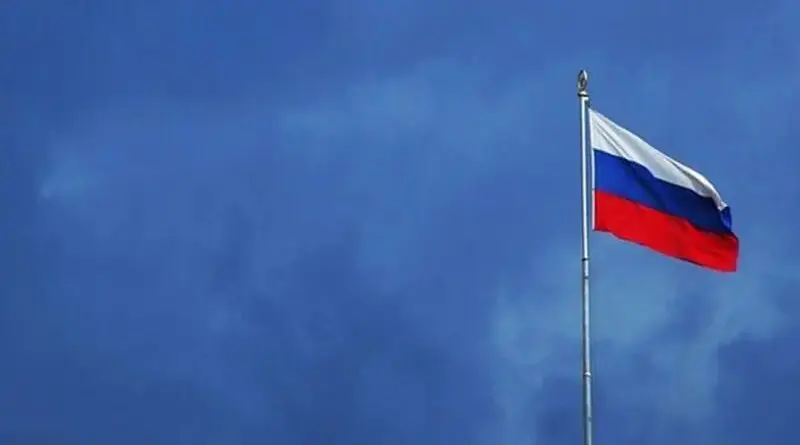Reviewing Russia’s Breakup Strategy And Its Implications For World Security – OpEd
As the Ukraine conflict remains unresolved both politically and diplomatically, Russia faces internal crises, especially with the recent uprising of the Wagnerians against Putin.
History suggests that Putin’s downfall could trigger not only the collapse of Russia’s oligarchic political system but also the breakup of various countries within this vast territory. However, such a scenario could have unforeseen and grave implications for the world and the West in terms of security, international political economy, and regional dynamics.
Security crisis in Eastern Europe
One of these risks is the emergence of small countries with a radical Muslim population that would split from the Volga region, Dagestan, Tatarstan, and the North Caucasus; Chechnya. Moreover, according to some projections, Russia’s Muslim population is growing and could reach about one-third of its total population by 2030, up from 20 million currently. The problem is that the involvement of Chechens in ISIS’s battlefields suggests that Russia could become a new hub for extremist Islamists if it breaks up.
This would also awaken dormant jihadist cells in Central Asia and drive them toward Europe. Thus, Europe’s security worries would expand from one region (the Middle East and North Africa) to two regions and raise the alarm for Eastern European countries. Additionally, these countries should anticipate a wave of potential refugees following Russia’s collapse. The migration of millions of ethnic Russians along with terrorist attacks and border conflicts could throw Europe into chaos. This crisis could also affect Central Asian countries and create an insecurity domino effect in Tajikistan, Kazakhstan, Kyrgyzstan, Turkmenistan, and Uzbekistan. This would ultimately undermine the existing security belt from Central Asia to Europe and facilitate the free flow of weapons, fighters, and jihadist militants across borders.
In the realm of security, it should be acknowledged that security for European politicians has been a mere fabricated image rather than a reality so far. Now Ukraine’s invasion of Russia has shattered the expectations of stability in post-Cold War Europe more than ever and has exposed this continent to unprecedented vulnerability. This vulnerability could also turn the ring of fire around Europe into a formidable challenge and leave the eastern borders of this continent highly exposed to Islamic terrorism stemming from Russia’s breakup and the refugee crisis.
Instability in energy and grain markets
From the viewpoint of energy markets and global energy security, Russia’s breakup as one of the main energy suppliers, particularly for China and India, would not only jeopardize the stability of markets but also create serious uncertainty in global energy supply and a steep rise in price in global markets. This would also exacerbate the inflation crisis that most European countries are facing and that are among the major consumers of global energy, which lack energy reserves. In this regard, a report by the International Energy Agency (IEA) indicates that the energy market crisis resulting from the shortfall of Russian output in the upcoming years will have severe consequences.
The crisis could also have an impact on global food security. For instance, Russia is the fourth largest exporter of grain to global markets, producing more than 125 million tons and supplying grain markets worldwide. Moreover, this country is the world’s largest exporter of wheat, accounting for 18 percent of the global wheat supply. Currently, as the war continues, grain prices are volatile and the market is adjusted by agreements between the parties for Ukrainian grain exports. If Russia breaks up and instability plagues this country, part of its production capacity would inevitably be cut off from the export chain. Such a scenario could trigger a sharp increase in prices and widespread chaos in low-income countries.
Nuclear crisis
The security crisis would reach an unprecedented level with Russia’s breakup and the landing of nuclear weapons in the hands of transnational and subnational groups. Since any warlord or country could acquire nuclear weapons from any side and there is no guarantee that they would want to be a responsible actor at the international level. Considering that Russia is the largest possessor of nuclear weapons in the world, any instability in this country due to a scheme to break up Russia could cause the dispersion and possibly smuggling of these weapons to other hotspots in the world, which could generally undermine global security for a very long and uncertain time. Such a situation would ultimately lead to the collapse of the current international security regime.
Generally, Russia’s breakup could push global security to the verge of complete collapse, despite all its flaws and shortcomings. This security is not only of a military dimension but also encompasses various security, economic, energy, and food dimensions, which would create a rift in the current order and disturb the balance of power among different powers. The disruption of this balance would make the eastern borders of Europe insecure. In fact, the implications of such a scenario are more serious than the crises that Americans and Westerners have encountered so far.


We need to think on ways to avoid such a messy collapse of the Russian “empire”. One way may be to explore with post-Putin democratically inclined forces ways to economically associate Russia with the EU, as the perspective of peaceful economic growth may be sufficiently strong to keep the warlords at bay.
It needs to be backed up by a strong security setup that has the authority and the means to act, if possible constructively , to resolve local conflicts. That may well require a novel international structure that is acceptable to most parties involved.